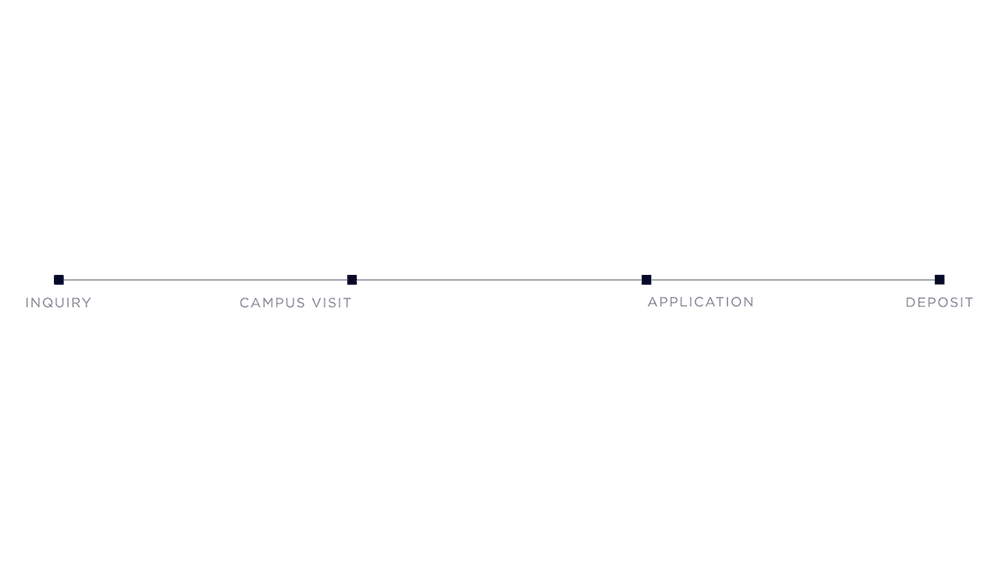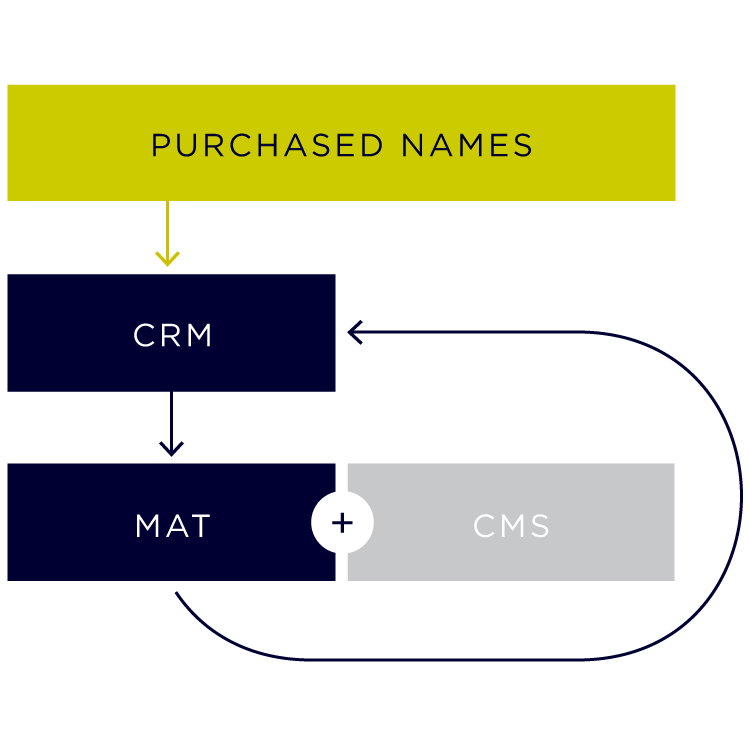Make Search More Relevant, Affordable and Seamless: Bring It In-House On Your Campus
For some enrollment managers the notion of executing search with in-house resources isn’t necessarily novel. For others, the idea is new, but the thought of taking on such a workload is daunting enough to sweeten the appeal of going to a third party specialist to begin the higher ed sales cycle.
Before we get too much further, we need to acknowledge two (of the many) evolving trends in college search:
1. Response rates—the way we’ve previously tracked them—are plummeting. The reasons why are not that well documented. Higher ed attributes the drop to the competitive landscape and students’ wariness about being marketed to. I contend, however, that the largest reason for the drop in response rates has more to do with the action of inquiring (filling out a form to receive more information) and how wholly unnecessary that step is for the student. In plain terms, it doesn’t matter if the student responds to search in the way search has been prescribed. The data that institutions purchase from list sources includes most everything you need to know to make an introduction to a student. Yet the somewhat derogatory way higher ed refers to non-inquiry applicants—almost exclusively they are called “stealth applicants”—reveals a lot about how much more importance institutions assign this step than the students themselves do. The only (first) necessary transactional step for students is the application. Higher ed knows this too, but still invests millions in the activity of search.
2. The emergence of CRM (Customer Relationship Management) and its marketing faculties afford the opportunity to execute outbound marketing tactics. The two most disruptive CRMs, Slate and Salesforce, bring different but equally sophisticated prospect management to enrollment managers. At one time in the not-so-distant past, holding and analyzing data en masse was the exclusive function of the “CRM.” It isn’t any longer. That’s one important advancement, but for this discussion we need to cite that the purpose of the modern CRM also shifts conceptually from data management to lead-nurturing. (This coincides with the shift from the admissions “counseling” practice to the “recruitment/sales” practice, but let’s bite that off later.)
Because of this conceptual shift a large component of the CRM is now suited to outbound marketing. The new tech stack in the admission office is the CRM, the MAT (Marketing Automation System) and the CMS (Content Management System, or how you update your website).
All of this to say, many institutions have purchased the technical capability to run search in-house, but don’t use it in that way. Functionally, most colleges and universities have nearly the same tools that [insert large student search firm] has.
The irony of most colleges having this stack in place is that these systems are still built and configured to track students on a line. A suspect becomes a prospect that becomes an applicant, and so on. Most institutions only invite and listen along this line. We invite a student to apply or deposit as the activity or call to action, but there are scores of other actions that the student is doing on their own that we have the capability of knowing.

For instance, it is totally reasonable to know that a specific student is visiting a collection of specific pages on your website.
You can know that Jane, the junior from Kalamazoo, visited all of the engineering pages on your website without inviting Jane to go look at them. She can do this on her own, we want her to do this on her own. But only if we’re listening and watching her activity.
You can know that if Jane is an inquiry and the next thing we want her to do is visit campus, that all the forms she sees on the site will ask her to schedule a visit.
You can know that Jane posted a photo on Instagram of her campus visit and how many followers she has.
You can know that if Jane is from Kalamazoo, her counselor is Eric, and Eric is notified when Jane performs any of the actions above.
You can know that Jane lives on the same block as Beverly (who is also an inquiry), so you can be sure their admission decisions go out at a similar time.
All of these actions happen outside of the linear path that most colleges lead their students through. They ask them to inquire, apply and deposit, and those are important doors, but the thresholds are where the richest information exists.
To be clear, search is not irrelevant (most institutions outside of the top 50 or so still need to introduce themselves to families). How we have been deploying and measuring search is. And certainly how much institutions invest in external sources needs to be re-evaluated. As an example of a shift in how we measure search, a very large firm recently advised one of our clients to measure the response to search by the number of click-throughs on an email appeal. This may seem like a slight distinction between clicking through on an email and filling out a form to indicate interest, but in my mind it’s a concession that the inquiry phase of the recruitment communication flow is less important than it ever has been.
This has led RHB to counsel our clients through the process of running search themselves which, by our estimation, helps them reduce their outside costs by as much as 50% in their first year and 75% in the second.
Here are the ingredients they need:

1. A modern CRM
2. An MAT integrated with the CRM (but integration is not necessary)
3. A purchased list (based on a predictive model that doesn’t need to be provided by a search company)
4. Some email
5. A landing page
Search has value and it isn’t necessarily easy. But it’s certainly not mysterious and it’s not as complex as some would lead you to believe. Search, on its own, won’t bring you a class, but by using the technology tools you likely already have, you can make your search efforts more cost-effective, efficient and useful to your recruitment strategies.

